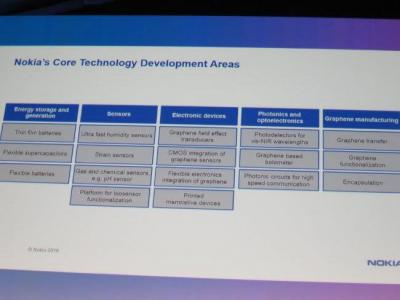![]() Nokia, based in Finland is a large multinational corporation and was once the world's leading mobile phone maker. Nokia Research Center, with its 10 laboratories world-wide, is exploring new technologies mostly for mobility applications.
Nokia, based in Finland is a large multinational corporation and was once the world's leading mobile phone maker. Nokia Research Center, with its 10 laboratories world-wide, is exploring new technologies mostly for mobility applications.
Nokia is involved with graphene research for several applications and the company takes part in the European 1 billion Euro Graphene Flagship research project. The company did not provide an update on its graphene projects for many years.
Keilalahdentie 4
Espoo
Finland
Graphene shows promise for high-speed optical communications
Researchers affiliated with the Graphene Flagship have demonstrated novel high-speed graphene-based data communication at a data rate of 50 Gb/s. Integrating graphene sheets into silicon photonics could form the basis for next-generation data communications.
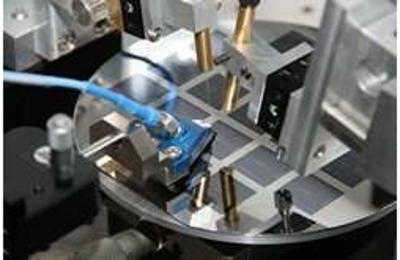
The project was a collaboration between Flagship partners AMO GmbH (Germany), the National Inter-University Consortium for Telecommunications (CNIT) (Italy), Ericsson (Sweden), Ghent University (Belgium), the Institute of Photonic Sciences (ICFO) (Spain), imec (Belgium), Nokia (Germany and Italy), the Vienna University of Technology (TU Wien) (Austria) and the University of Cambridge (UK).
Graphene electronics: commercialisation outlook for 2019
This is a guest post by Guillaume Chansin
Graphene is probably the most hyped material of the past decade, but so far commercial applications have been limited. Graphene is mostly used as an additive inside composites and plastics to enhance their thermal or structural properties. In the most recent high profile case, Huawei announced the integration of a passive graphene cooling film to improve heat management inside one of their smartphones. While this is a useful use of graphene, it is a far cry from the disruptive electronics that were promised when the material was first isolated.
It is worth considering that both investments and patent filings in graphene peaked in 2015. Nearly four years later, we can expect to see some of these to start paying off with some product launches.
Continuum Technologies wins first prize in the Nokia Open Innovation Challenge 2017
 Continuum Technologies, a UK-based company that develops graphene-based sensing nanotechnology embedded into fabrics, has one first prize in the 2017 Nokia Open innovation challenge.
Continuum Technologies, a UK-based company that develops graphene-based sensing nanotechnology embedded into fabrics, has one first prize in the 2017 Nokia Open innovation challenge.
Nokia will offer the startup the opportunity to explore joint business opportunities along with access to Nokia’s global resources.
Graphenea, Nokia and IEMN-CNRS collaborate to create high-frequency graphene transistors on flexible substrates
Scientists from IEMN-CNRS, Graphenea, and Nokia have demonstrated flexible graphene transistors with a record high cut-off frequency of 39 GHz. The graphene devices, made on flexible polymer substrates, are stable against bending and fatigue of repeated flexing.
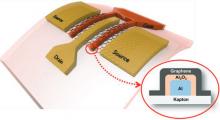
The graphene field effect transistor (GFET) is made from high quality CVD grown graphene with a carrier mobility of ~2500 cm2 V-1 s-1 on a flexible Kapton substrate with a thin alumina dielectric spacer in the channel region. The use of such sophisticated and optimized materials leads to the record high frequency performance as well as stability against bending. The GFET reportedly continues to operate even after 1,000 bending cycles and can be flexed to a radius of 12 mm with a cutoff frequency shift of up to 10%.
Graphene enables ultrahigh sensitivity infrared detectors
Researchers from the Graphene Flagship, working at the University of Cambridge (UK), Emberion (UK), the Institute of Photonic Sciences (ICFO; Spain), Nokia UK, and the University of Ioannina (Greece) have developed a novel graphene-based pyroelectric bolometer - an infrared (IR) detector with record high sensitivity for thermal detection, capable of resolving temperature changes down to a few tens of µK. This work may open the door to high-performance IR imaging and spectroscopy.
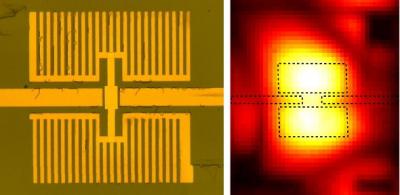
The technology is focused on the detection of the radiation generated by the human body and its conversion into a measurable signal. The key point is that using graphene, the conversion reaches performance more than 250 times better than the best sensor already available. But the high sensitivity of the detector could be of use for spectroscopic applications beyond thermal imaging. With a high-performance graphene-based IR detector that gives a strong signal with less incident radiation, it is possible to isolate different parts of the IR spectrum. This is of key importance in security applications, where different materials explosives, for instance can be distinguished by their characteristic IR absorption or transmission spectra.
Nokia graphene updates from the 2016 MWC
The graphene keynote speech in the MWC 2016 included Nokia's Head of Business Line, Tapani Ryhanen's talk on graphene activity in Nokia.
It was a fascinating segment that shed light on the company's graphene-related activities, some of which (as can be seen in the image above) are energy storage applications, sensors, various electronic devices, photonics, optoelectronics and even graphene manufacturing - which shows that the company is really aiming at completing a full circle of graphene use.
Electricity can flow through graphene at high frequencies without energy loss
Researchers at Plymouth University, Cambridge and Tohoku (Japan) Universities and Nokia Technologies have found that electrical signals transmitted at high frequencies through graphene do not lose energy. In fact, the study showed that graphene out-performs any other known material, including superconductors, when carrying high-frequency electrical signals compared to direct current.
This finding may result in wide-ranging technology developments like next generation high-speed transistors, amplifiers, mobile phones, satellite communications and ultra-sensitive biological sensors.
Nokia patents a graphene oxide sensor for protection of mobile devices from water
Nokia recently issued a patent for a graphene oxide-based sensor for protection of mobile devices against water damages. The sensor will use a graphene oxide sensing film senses moisture content or change in relative humidity and triggers an ultra-fast disconnection of the mobile device from its power source (battery).
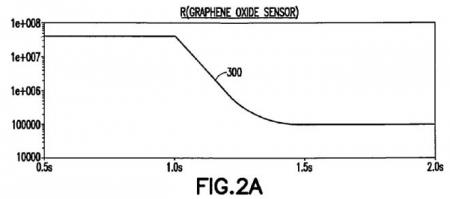
The sensor will include a sensor capable of sensing water in liquid or vapor form based on the measurement of large time derivative values. The sensor will comprise of a graphene oxide thin film and two or more electrodes in contact with the thin film. An electronic switch will be connected to the sensor and to a power source that powers the circuitry in the electronic device. The GO can be easily integrated into the sensor as a thin film by printing it on the power source's surface.The film should be less than 100 nanometers thick and could also be spray-coated or spin-coated onto the surface.
Nokia patents graphene-based flexible photon battery
Nokia has recently issued what could be a truly revolutional patent: a self-charging graphene-based photon battery, capable of being printed on flexible substrates.
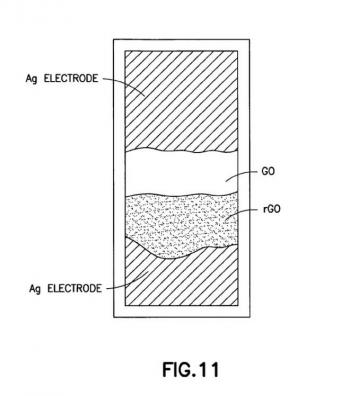
The patent describes a battery that can regenerate itself immediately after discharge through continuous chemical reactions, without an external energy input. The result is an energy autonomous device. The battery uses humid air for the purpose of recharging and be made highly transparent.
Will Nokia prototype graphene-based optical sensors in the near future?
 Nokia, based in Finland and functions as a large multinational corporation, has recently published a job opening that raises the notion that it might move towards the prototyping phase of graphene-based sensors.
Nokia, based in Finland and functions as a large multinational corporation, has recently published a job opening that raises the notion that it might move towards the prototyping phase of graphene-based sensors.
Nokia, which is known to be working on the R&D relating to optical sensors and has already patented a graphene-based photo detector in the past, published a job opening seeking "an expert in optoelectronics" that will be respnosible for developing graphene devices to create the basis for a range of optical sensor products. The ad also stresses the need for capabilities pertaining to fabrication of devices that are capable of volume production.
Pagination
- Page 1
- Next page
